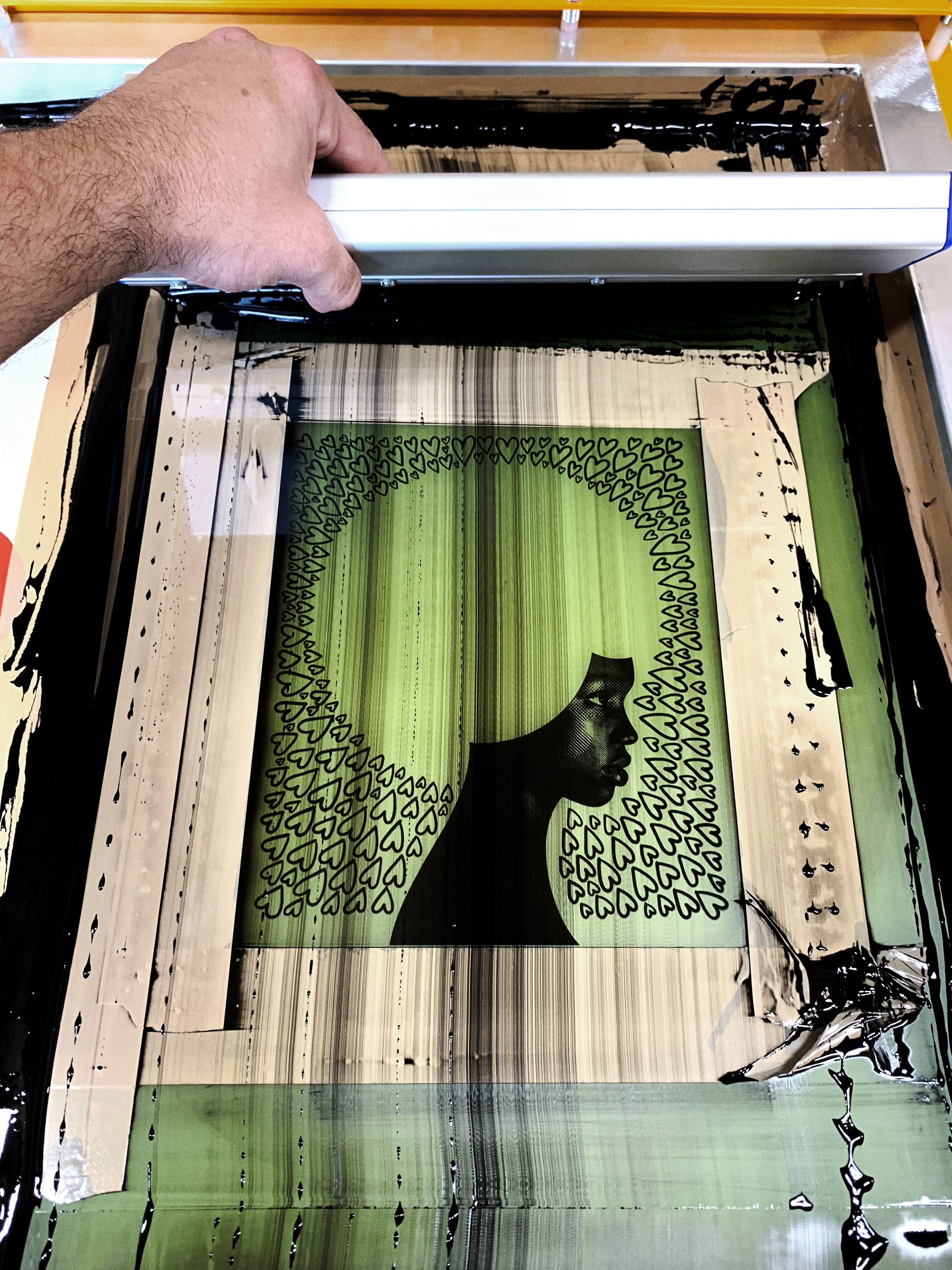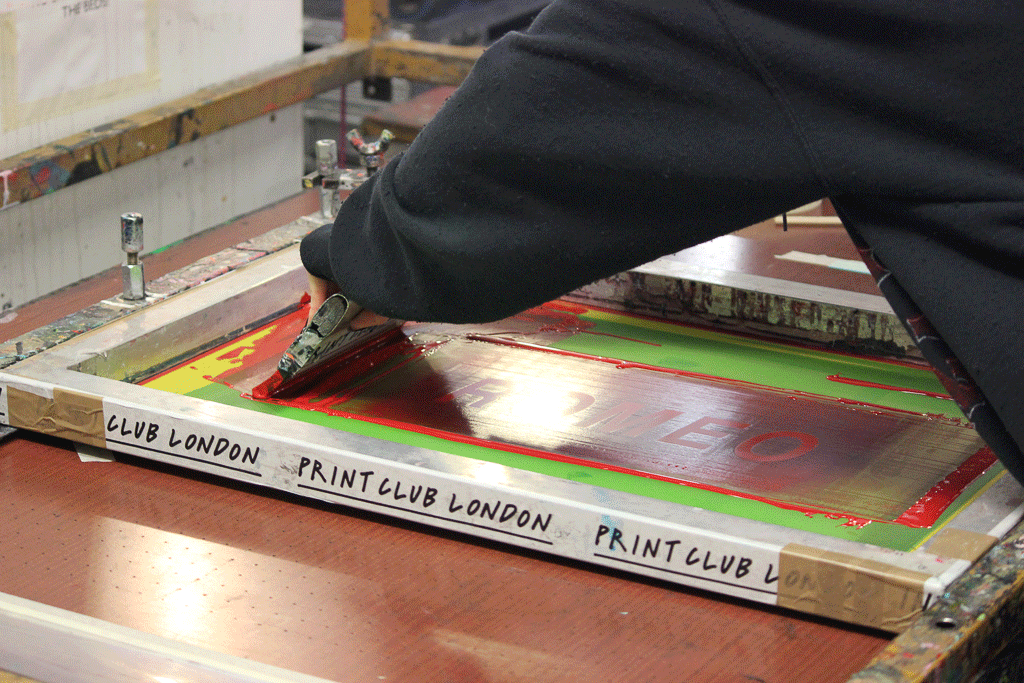ChatGPT said: Finding the best deals with 10:9 Design near me: tips
Wiki Article
The Vital Overview to Understanding Screen Printing and Its Versatile Utilizes
Screen printing has an abundant background that dates back to ancient times, evolving into an innovative method made use of across different sectors today. This guide discovers the complexities of the screen printing procedure, detailing its applications in home, style, and advertising and marketing design - 10:9 Design Screen Printing. Comprehending these principles can open up innovative potential for both commercial and artistic jobs. The adhering to areas will certainly reveal crucial pointers and methods to enhance one's screen printing venturesThe History of Screen Printing
Although screen printing has origins that trace back centuries, its development mirrors the artistic and technological developments of different societies. Coming from ancient China, the strategy was initially used for enhancing fabrics and later spread to Japan, where it became essential to Ukiyo-e woodblock printing. The technique shifted to Europe in the 18th century, where it obtained popularity amongst artisans and commercial printers. The development of picture emulsion in the 20th century transformed screen printing, permitting more intricate layouts and better performance. Musicians like Andy Warhol further propelled its appeal, making use of the medium to create iconic jobs that mixed commercialism and fine art. By the late 20th century, screen printing had actually established itself as a flexible technique, employed in vogue, marketing, and art. Today, it remains to progress, incorporating electronic technology and broadening its applications throughout different sectors.The Screen Printing Process Explained
Screen printing transforms imaginative visions into concrete styles with a series of specific steps. An image is created and then transferred onto a screen, generally made of great mesh fabric extended over a frame. A light-sensitive emulsion is used to the screen, which is exposed to light, hardening in locations not covered by the photo. After washing out the unhardened emulsion, a stencil is developed.Next, the screen is placed over the substrate, whether it be fabric, paper, or an additional material. Ink is after that pressed with the open locations of the pattern making use of a squeegee, depositing the layout onto the substrate below. This procedure can be repeated for several colors, needing separate displays for each and every hue. Finally, the printed item is treated making use of warm to assure the ink sticks properly, causing a durable, vibrant layout on-line.
Kinds Of Screen Printing Techniques

In addition, specialized strategies, such as discharge screen printing, get rid of dye from the material to create softer prints, while foil screen printing uses metal foil to achieve a shiny coating (10:9 Design reviews). Each strategy provides unique qualities, satisfying different innovative demands and production ranges, ultimately expanding the opportunities within the screen printing domain
Applications of Screen Printing in Various Industries

In addition, the signage and marketing fields make use of screen printing for creating eye-catching screens and banners. This technique enables bold colors and elaborate styles that capture attention. In electronics, screen printing is used for using conductive inks to circuit boards, vital for element connections. The home decoration market accepts screen printing to create distinct designs on fabrics and wall art. In general, screen printing functions as a crucial device across varied fields, improving items with personalized and aesthetically enticing graphics.
Tips for Effective Screen Printing Projects
While embarking on a screen printing job, mindful interest to detail can significantly enhance the last outcome. Initially, selecting high-quality products is important; this consists of the screen, inks, and substrates. Utilizing appropriate mesh matters can affect ink deposition and detail resolution. Preparation is just as essential; comprehensive cleaning of screens and proper direct exposure times guarantee crisp prints.Next, precise enrollment is essential for multi-color prints. Making use of placement devices can help achieve accurate layering. In addition, screening prints on scrap products prior to production assists recognize prospective concerns without squandering sources.

Regularly Asked Inquiries
What Materials Are Ideal for Screen Printing on Textile?
Cotton and polyester blends are optimal for screen printing on fabric as a result of their longevity and ink absorption. Furthermore, specialty textiles like silk or canvas can generate one-of-a-kind structures and surfaces, improving the general design quality.Just how Do I Clean and Maintain Screen Printing Equipment?
To clean and maintain screen printing equipment, one need to regularly clean screens with appropriate solvents, evaluate mops for wear, lubricate moving components, and shop all products in a dry, dust-free setting to lengthen their life expectancy.What Are the Environmental Effects of Screen Printing?
Screen printing can have significant environmental impacts, consisting of chemical waste from inks and solvents, water usage throughout cleansing processes, and energy intake. Environment-friendly products and lasting techniques are necessary for lessening these adverse effects.Can Screen Printing Be Done at Home Successfully?
Screen printing can be properly done at home with the appropriate products and techniques. Hobbyists can produce high quality prints, though success relies on their ability degree, tools, and understanding of the procedure entailed.
What Are the Prices Connected With Beginning a Display Printing Business?

Starting a screen printing business entails prices for tools, products, and office. Preliminary expenses generally vary from a couple of hundred to a number of thousand dollars, depending upon the scale, quality of machinery, and desired manufacturing ability.
Screen printing has an abundant history that dates back to ancient times, evolving into an innovative strategy utilized across various sectors today. An additional method, rotary screen printing, uses cylindrical screens, promoting continual printing on material rolls, consequently improving effectiveness for large-scale manufacturings. In addition, specialized methods, such as discharge screen printing, eliminate dye from the textile to produce softer prints, while aluminum foil screen printing uses metallic aluminum foil to attain a glossy coating. In the style field, screen printing is extensively utilized to develop dynamic 10:9 Design Texas layouts on apparel, making it possible for brands to showcase their special designs. Cotton and polyester blends are suitable for screen printing on material due to their resilience and ink absorption.
Report this wiki page